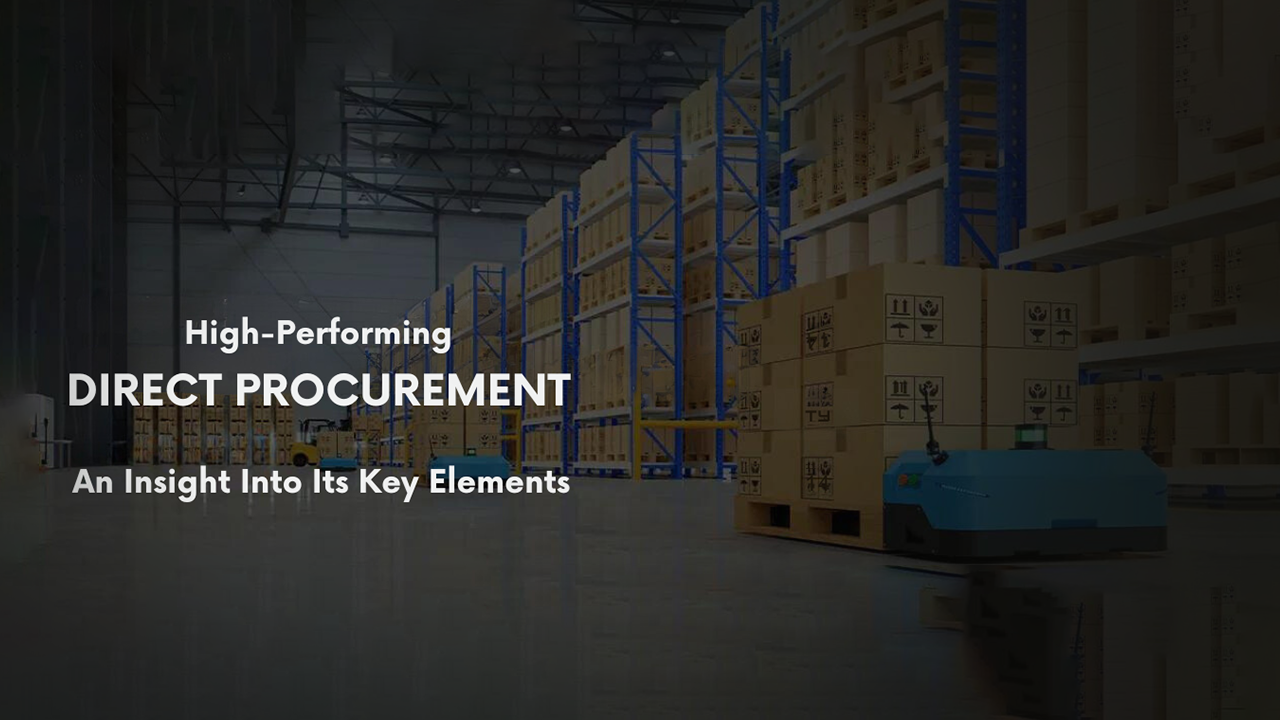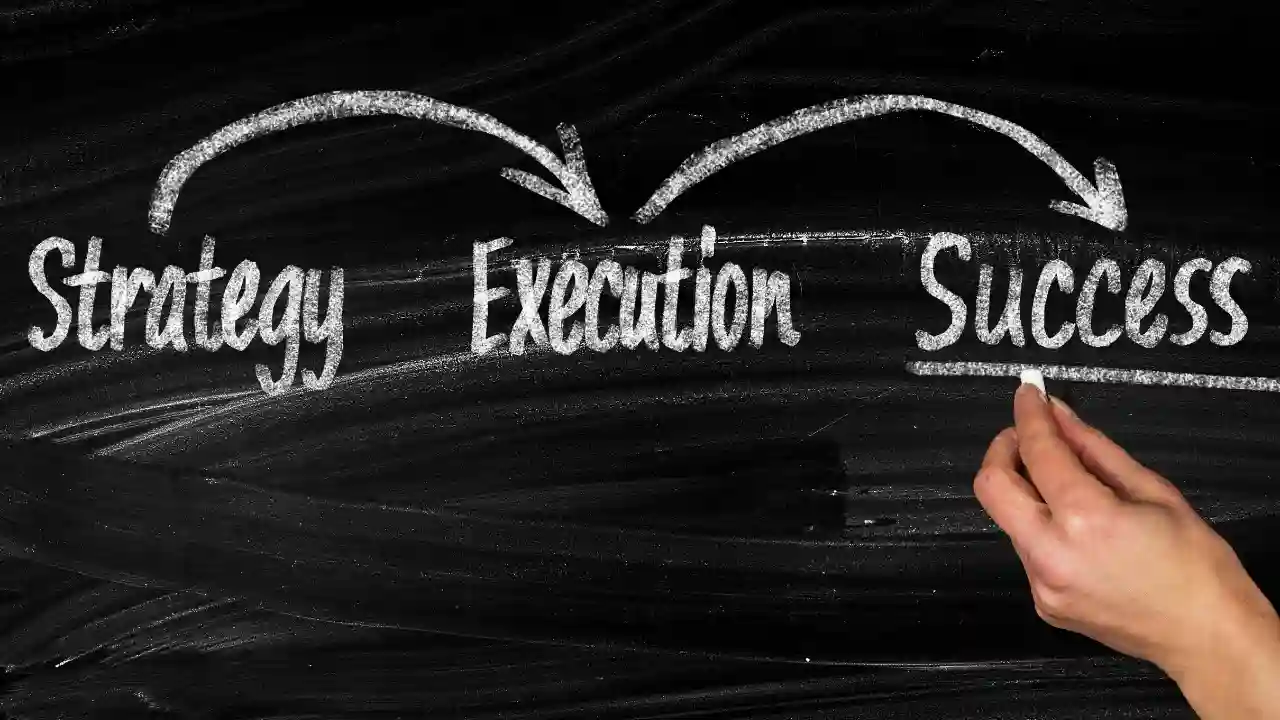Imagine a high-performing direct procurement strategy as a well-oiled machine. Every part works in harmony, optimizing efficiency and minimizing waste. Direct procurement can be the difference between leading the market or falling behind. The stakes are high, and procurement professionals must adapt to ever-changing landscapes.
This blog will explore the key elements of a high-performing direct procurement strategy. We’ll unpack each component with examples and ‘how to approach’ to offer actionable insights. Let’s dive in and explore how you can transform your direct procurement strategy into a powerhouse.
10 Key Elements of a High-Performing Direct Procurement Strategy
1. Clearly Defined Scope:
The first step is clearly defining the scope of your direct procurement strategy. This entails identifying all the goods and services directly impacting your core offering. Here’s a breakdown with examples:
- Raw Materials: Steel for car manufacturers, cotton for clothing companies, and wood for furniture makers.
- Components & Parts: Engines, tires, and electrical components for car manufacturers; fabrics, buttons, and zippers for clothing companies.
- Direct Services: Design services, cloud storage solutions for software companies, security services, and waste management for manufacturing facilities.
How to Approach:
- Conduct internal workshops with various departments (engineering, production, marketing) to understand their needs.
- Categorize goods and services based on spend volume, criticality to production, and risk factors.
- Develop a comprehensive sourcing map that visually depicts your direct procurement landscape.
2. Data-Driven Decision Making:
Leverage data analytics to gain valuable insights that inform your procurement strategies. Here’s how:
- Identify High-Spend Categories: Analyze historical spending data to pinpoint categories with the highest expenditures. Focus negotiation efforts and cost-saving initiatives on these areas. (For example, a food manufacturer identifies packaging materials as a high-spend category.)
- Track Spending Patterns: Analyse trends over time to identify potential cost-saving opportunities. For example, a seasonal surge in demand for a particular raw material might necessitate early negotiation and stockpiling to avoid price hikes.
- Benchmarking: Compare your procurement performance metrics (cost-per-unit, lead times) against industry benchmarks to identify areas for improvement. (For example, a clothing company might benchmark its cotton sourcing costs against competitors and discover room for negotiation with its current supplier.)
How to Approach:
- Invest in procurement software that provides data analytics dashboards and reporting capabilities.
- Partner with data analysts to translate raw data into actionable insights.
- Develop Key Performance Indicators (KPIs) specific to your direct procurement strategy and track them regularly.
3. Strategic Sourcing & Supplier Relationship Management
Move beyond transactional relationships and cultivate long-term partnerships with key suppliers. Here’s how to build win-win collaborations:
- Supplier Selection: Develop a rigorous supplier selection process that evaluates quality, price, reliability, and sustainability practices. Utilize Request for Information (RFI) and Request for Proposal (RFP) documents to gather detailed information from potential suppliers.
- Supplier Development Programs: Invest in programs that help your suppliers improve their efficiency and capabilities. This can lead to cost reductions and improved quality for both parties. (Example: An electronics manufacturer collaborates with a chip supplier to streamline their production processes, lowering costs for both companies.)
- Open Communication & Collaboration: Regular communication with suppliers fosters trust and transparency. Share forecasts, discuss potential challenges, and work collaboratively to find solutions.
How to Approach:
- Develop a supplier segmentation strategy, categorizing suppliers based on their importance and risk profile. Invest more resources into managing relationships with high-impact, high-risk suppliers.
- Conduct regular supplier performance reviews to assess their adherence to quality standards, delivery timelines, and pricing agreements.
- Implement a supplier risk management strategy to identify and mitigate potential risks associated with your suppliers, such as financial instability or geopolitical disruptions.
4. Effective Negotiation Strategies
Develop a strong negotiation team with the tools and tactics to secure the best possible supplier deals. Here’s how to approach negotiations:
- Market Research & Cost Analysis: Thoroughly research market trends, competitor pricing, and alternative sourcing options before entering negotiations. This strengthens your bargaining position.
- Win-Win Approach: Focus on achieving mutually beneficial outcomes. Aim for long-term partnerships rather than short-term gains at the expense of the supplier relationship.
- Negotiation Tactics: Utilize various negotiation tactics, such as value-based pricing, total cost of ownership models (considering all costs associated with a purchase, not just the initial price), and multi-year contracts with volume discounts.
How to Approach:
- Train your procurement team in negotiation best practices. Role-playing exercises can be valuable tools to hone negotiation skills.
- Empower your negotiation team to make informed decisions within set parameters.
- Develop a negotiation strategy document outlining your objectives, target concessions, and walk-away points for each supplier interaction.
5. Standardization & Streamlining Processes
Standardize procurement processes across the organization to eliminate redundancies and improve efficiency. Here’s how:
- Central Procurement Policy: Develop a centralized procurement policy outlining clear sourcing, negotiation, and contract management guidelines.
- Procurement Platforms: Implement e-procurement platforms to automate workflows, such as purchase order generation, vendor management, and invoice processing.
- Communication Protocols: Standardize communication protocols to ensure consistent information flow throughout procurement.
How to Approach:
- Conduct a process mapping exercise to identify bottlenecks and opportunities for streamlining.
- Invest in user-friendly e-procurement solutions that are easy for internal and external stakeholders to navigate.
- Regularly review and update your procurement policies to reflect best practices and address emerging challenges.
6. Risk Management & Mitigation Strategies
Proactively identify and mitigate potential risks associated with your direct procurement activities. Here’s how to approach risk management:
- Supplier Risk Assessment: Evaluate your suppliers’ financial stability, operational continuity plans, and adherence to safety and environmental regulations.
- Supply Chain Disruption Planning: Develop contingency plans to address potential disruptions, such as natural disasters, political instability, or trade wars. This might involve diversifying your supplier base or establishing safety stock for critical materials.
- Contract Management: Negotiate contracts that include provisions for mitigating risks, such as force majeure clauses and quality control procedures.
Also Read: A Comprehensive Guide to Supplier Risk Management
How to Approach:
- Implement a risk management framework that identifies, assesses, prioritizes, and mitigates potential risks.
- Regularly monitor and update your risk assessments as market conditions and supplier performance evolve.
- Conduct scenario planning exercises to test the effectiveness of your risk mitigation strategies.
7. Sustainability Integration
As environmental and social responsibility gain importance, consider integrating sustainability practices into your direct procurement strategy. Here’s how:
- Sustainable Sourcing: Prioritize suppliers demonstrating commitment to ethical labor practices, environmental sustainability, and responsible resource management.
- Life Cycle Assessment: When making sourcing decisions, consider the entire life cycle of a product or service. This includes factors like raw material extraction, manufacturing processes, and end-of-life disposal.
- Transparency & Collaboration: Work with suppliers to identify and implement sustainable practices throughout the supply chain.
How to Approach:
- Develop a sustainable procurement policy outlining your organization’s commitment to environmental and social responsibility.
- Partner with sustainability organizations to gain access to best practices and resources.
- Track and report on your progress towards achieving your sustainability goals.
8. Innovation & Continuous Improvement
A high-performing direct procurement strategy is not static. Here’s how to foster a culture of innovation and continuous improvement:
- Supplier Collaboration: Partner with innovative suppliers to co-develop new products or processes that can lead to cost savings or improved quality.
- Technology Adoption: Embrace emerging technologies like Artificial Intelligence and Machine Learning to automate tasks, improve data analysis, and optimize sourcing decisions.
- Performance Measurement & Benchmarking: Regularly measure the performance of your direct procurement strategy against established KPIs and industry benchmarks. Identify areas for improvement and implement corrective actions.
How to Approach:
- Establish a dedicated innovation committee within your procurement team to explore new ideas and technologies.
- Encourage open communication and knowledge sharing among team members.
- Conduct regular reviews of your direct procurement strategy to assess its effectiveness and identify opportunities for optimization.
9. Building Internal Alignment & Communication
Effective communication and alignment with internal stakeholders are crucial for successful implementation. Here’s how to achieve this:
- Stakeholder Engagement: Actively engage with stakeholders from various departments (engineering, finance, marketing) to understand their needs and concerns.
- Communication Strategy: Develop a communication strategy to inform stakeholders about the direct procurement strategy’s objectives and progress.
- Training & Development: Provide training to internal stakeholders on the procurement process, supplier management best practices, and the benefits of a strategic approach to procurement.
How to Approach:
- Develop clear and concise communication materials that explain the benefits of a strategic direct procurement strategy for various departments.
- Encourage feedback from stakeholders and incorporate their insights into the ongoing development of the strategy.
10. Building a Culture of Procurement Excellence
Cultivate a culture within your organization that values the importance of strategic procurement. Here’s how:
- Recognition & Rewards: Recognize and reward procurement team members for their cost savings, supplier relationship management, and innovation achievements.
- Metrics & Visibility: Develop and track key performance indicators (KPIs) that showcase the impact of the direct procurement strategy on the organization’s overall performance. Regularly share these metrics with senior leadership to demonstrate the value of procurement.
- Talent Acquisition & Development: Invest in recruiting and retaining top procurement talent. Provide opportunities for professional development to enhance their skills and knowledge.
How to Approach:
- Develop a career development plan for your procurement team that outlines training opportunities and potential career paths.
- Foster a collaborative and results-oriented work environment within the procurement department.
- Promote the value of procurement throughout the organization by highlighting success stories and showcasing the team’s contributions.
Conclusion
Building a high-performing direct procurement strategy is an ongoing process that requires continuous effort and adaptation. By implementing the abovementioned elements, procurement professionals can establish a robust and optimized system for acquiring goods and services, ultimately driving significant cost savings, improved quality, and sustainable competitive advantage for their organization.
Are you considering of implementing a best-in-class e-Procurement solution?
Book your demo today and learn how Zycus can help build a successful direct procurement strategy for your enterprise.
Related Reads:
- The Powerhouse of Production: A Guide to Direct Procurement in the Digital Age
- Mastering Services Procurement: A Comprehensive Guide
- Your Guide to Direct Spend Management in Procurement
- Procurement Process: 7 Steps for Optimal Efficiency and Cost Savings
- What Is Procurement Catalog Management: Your AIO Guide
- Indirect Procurement: Exclusive Guide Reiterating the Basics




























































